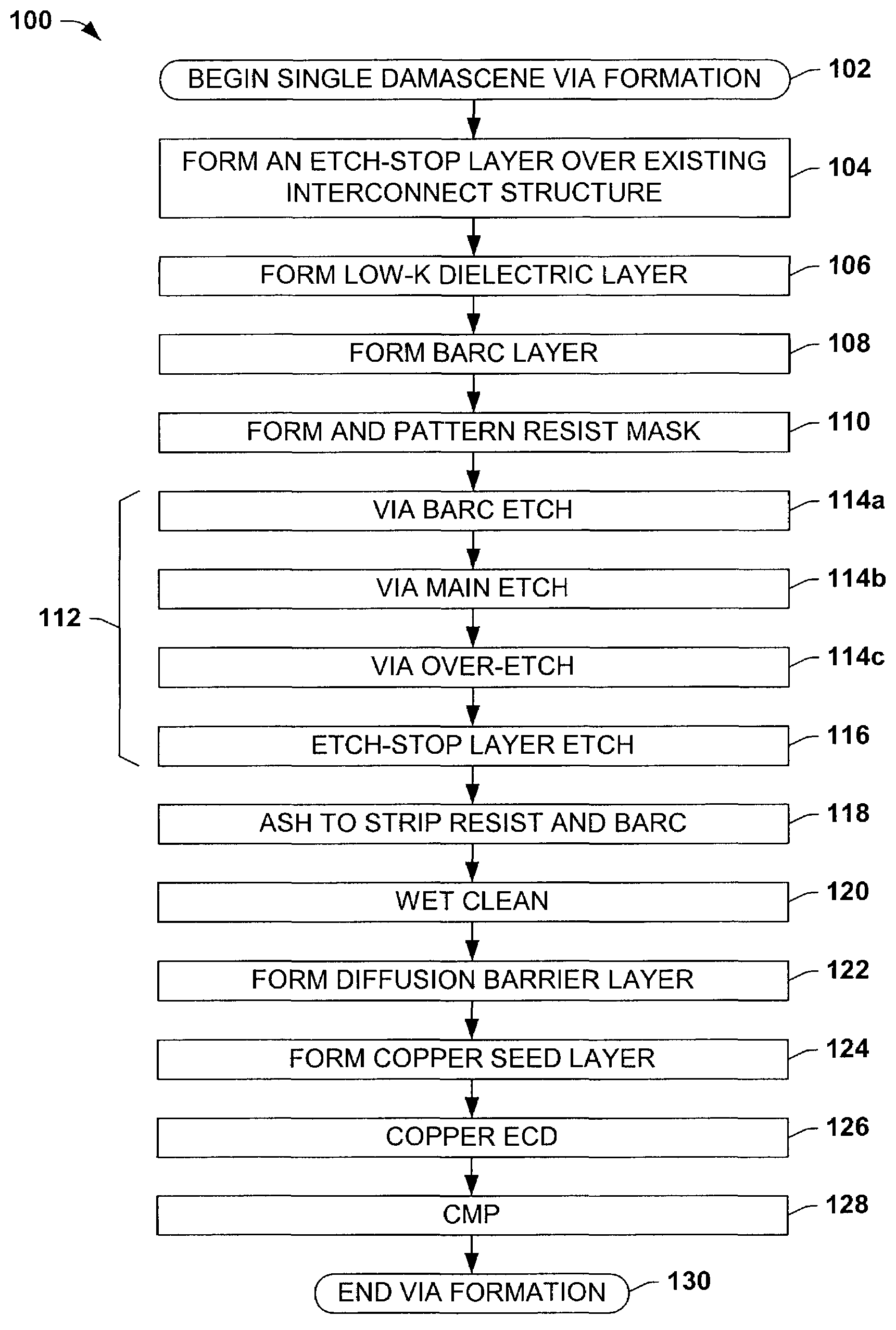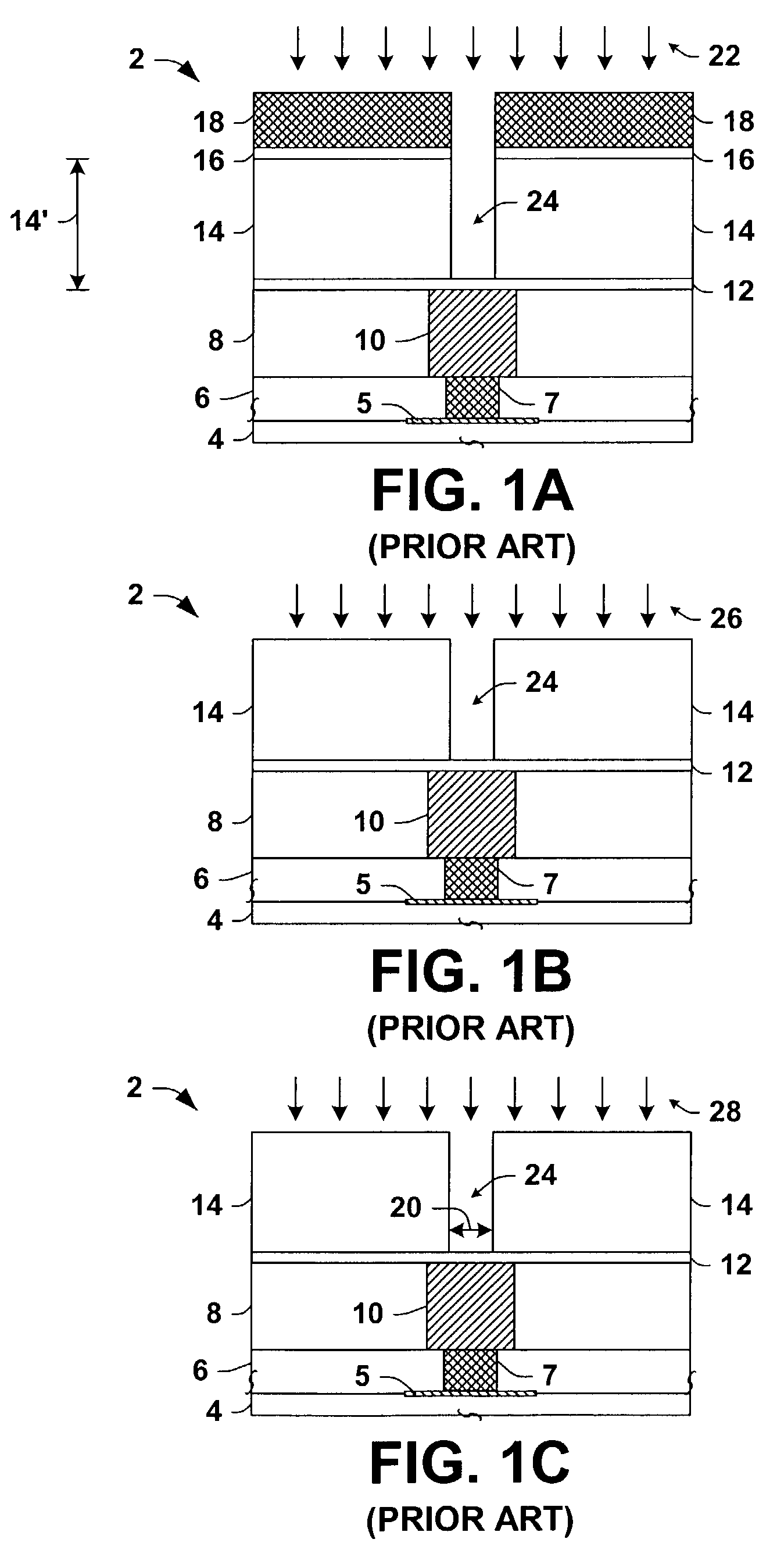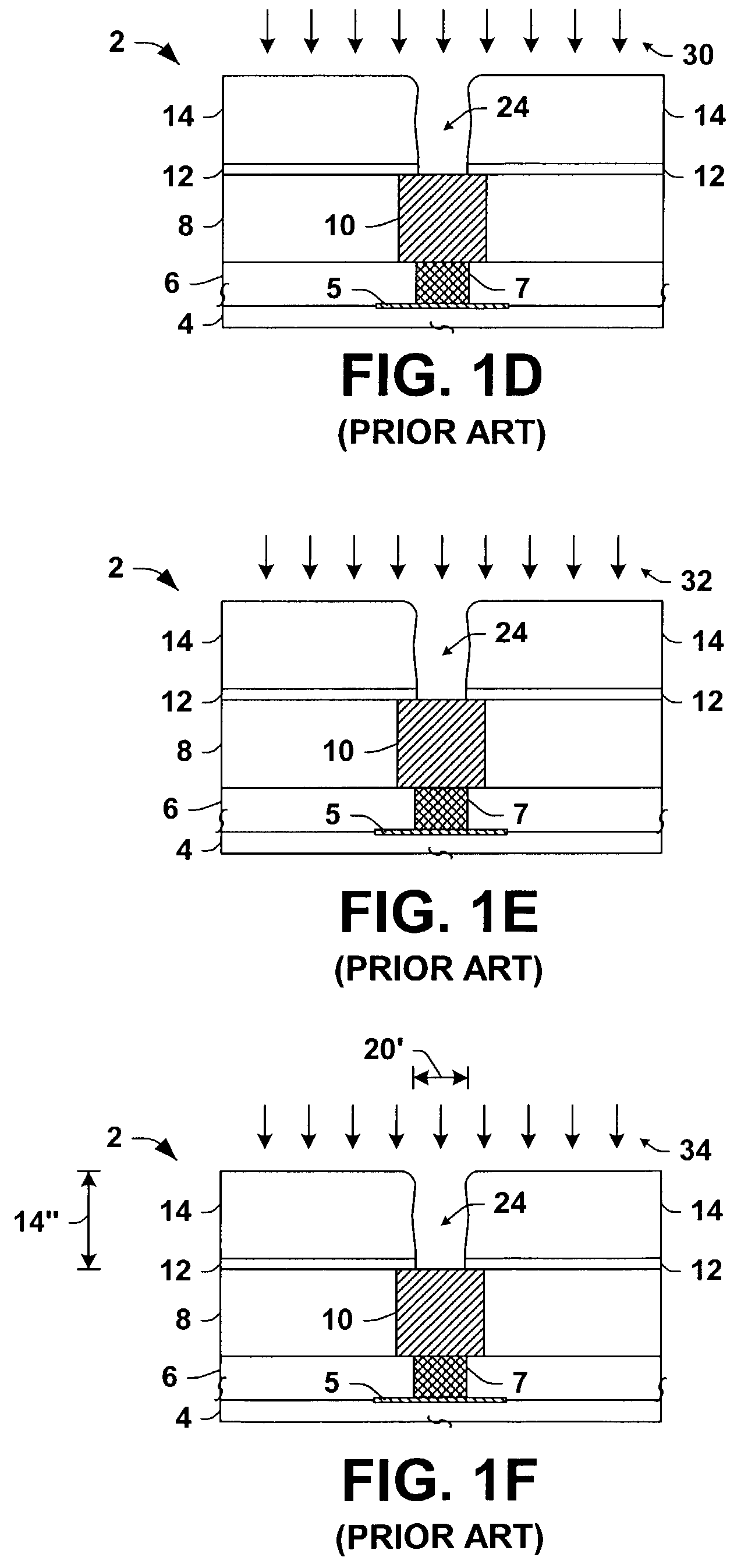Methods for forming single damascene via or trench cavities and for forming dual damascene via cavities
a damascene and cavity technology, applied in the direction of semiconductor devices, semiconductor/solid-state device details, electrical apparatus, etc., can solve the problems of etching deposited copper to form wiring patterns, insulation degradation and/or copper diffusion, via profile distortion, etc., to facilitate better via cd control, improve the selectivity of etch stop layer, and simplify the fabrication process flow
- Summary
- Abstract
- Description
- Claims
- Application Information
AI Technical Summary
Benefits of technology
Problems solved by technology
Method used
Image
Examples
Embodiment Construction
[0026]The present invention will now be described with reference to the attached drawings, wherein like reference numerals are used to refer to like elements throughout. The invention relates to methods for forming single and / or dual damascene interconnect structures, including via and / or trench cavities or openings during interconnect processing of integrated circuits and other semiconductor devices. One or more implementations of the invention are hereinafter illustrated and described in the context of single or dual damascene trench and / or via cavity formation in low-k organo-silicate-glass (OSG) structures, where silicon carbide (SiC) etch-stop layers are employed. However, it will be appreciated by those skilled in the art that the invention is not limited to the exemplary implementations illustrated and described hereinafter. In particular, the various aspects of the invention may be employed in association with processing of devices using OSG, FSG, or other low-k or ultra low...
PUM
 Login to View More
Login to View More Abstract
Description
Claims
Application Information
 Login to View More
Login to View More - R&D
- Intellectual Property
- Life Sciences
- Materials
- Tech Scout
- Unparalleled Data Quality
- Higher Quality Content
- 60% Fewer Hallucinations
Browse by: Latest US Patents, China's latest patents, Technical Efficacy Thesaurus, Application Domain, Technology Topic, Popular Technical Reports.
© 2025 PatSnap. All rights reserved.Legal|Privacy policy|Modern Slavery Act Transparency Statement|Sitemap|About US| Contact US: help@patsnap.com



